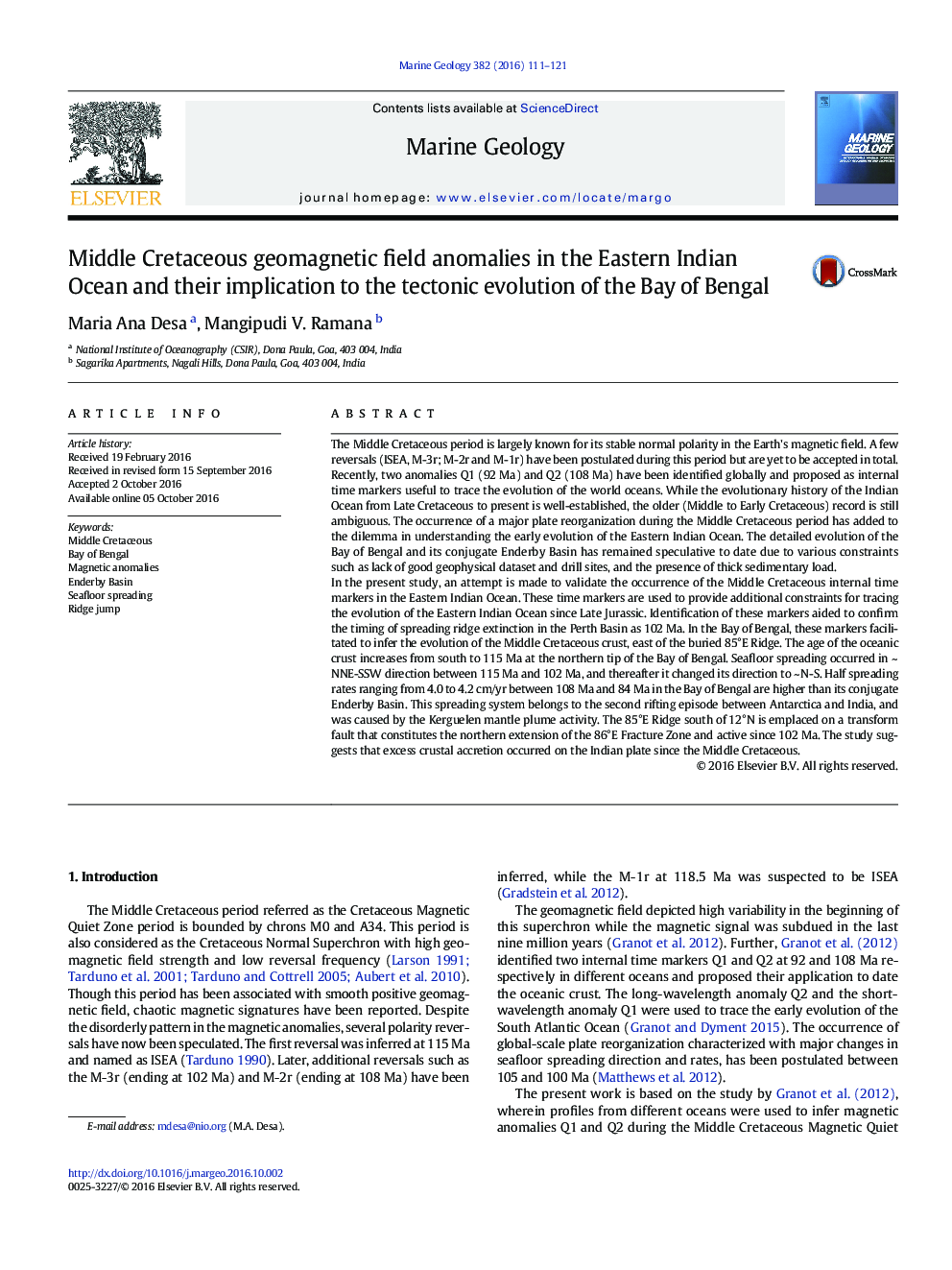| کد مقاله | کد نشریه | سال انتشار | مقاله انگلیسی | نسخه تمام متن |
|---|---|---|---|---|
| 4718109 | 1639070 | 2016 | 11 صفحه PDF | دانلود رایگان |
• Middle Cretaceous geomagnetic field anomalies identified in Eastern Indian Ocean.
• Spreading direction changed from NNW-SSE to N-S between 102 and 100 Ma.
• Seafloor spreading extinction in the Perth Basin at 102 Ma
• Excess crustal accretion on the Indian plate since the Middle Cretaceous
• The 85°E Ridge south of 12°N is northward continuation of the 86°E Fracture Zone.
The Middle Cretaceous period is largely known for its stable normal polarity in the Earth's magnetic field. A few reversals (ISEA, M-3r; M-2r and M-1r) have been postulated during this period but are yet to be accepted in total. Recently, two anomalies Q1 (92 Ma) and Q2 (108 Ma) have been identified globally and proposed as internal time markers useful to trace the evolution of the world oceans. While the evolutionary history of the Indian Ocean from Late Cretaceous to present is well-established, the older (Middle to Early Cretaceous) record is still ambiguous. The occurrence of a major plate reorganization during the Middle Cretaceous period has added to the dilemma in understanding the early evolution of the Eastern Indian Ocean. The detailed evolution of the Bay of Bengal and its conjugate Enderby Basin has remained speculative to date due to various constraints such as lack of good geophysical dataset and drill sites, and the presence of thick sedimentary load.In the present study, an attempt is made to validate the occurrence of the Middle Cretaceous internal time markers in the Eastern Indian Ocean. These time markers are used to provide additional constraints for tracing the evolution of the Eastern Indian Ocean since Late Jurassic. Identification of these markers aided to confirm the timing of spreading ridge extinction in the Perth Basin as 102 Ma. In the Bay of Bengal, these markers facilitated to infer the evolution of the Middle Cretaceous crust, east of the buried 85°E Ridge. The age of the oceanic crust increases from south to 115 Ma at the northern tip of the Bay of Bengal. Seafloor spreading occurred in ~ NNE-SSW direction between 115 Ma and 102 Ma, and thereafter it changed its direction to ~ N-S. Half spreading rates ranging from 4.0 to 4.2 cm/yr between 108 Ma and 84 Ma in the Bay of Bengal are higher than its conjugate Enderby Basin. This spreading system belongs to the second rifting episode between Antarctica and India, and was caused by the Kerguelen mantle plume activity. The 85°E Ridge south of 12°N is emplaced on a transform fault that constitutes the northern extension of the 86°E Fracture Zone and active since 102 Ma. The study suggests that excess crustal accretion occurred on the Indian plate since the Middle Cretaceous.
Journal: Marine Geology - Volume 382, 1 December 2016, Pages 111–121
